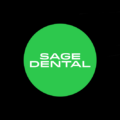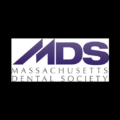|
INTRODUCTION
While some job titles have changed over the years (stewardesses are known as flight attendants, and secretaries as administrative assistants are examples that come to mind), dental assistants have maintained not only their titles but also their general responsibilities. The introduction of chairside CAD/CAM dentistry (E4D Dentist [D4D Technologies] [Figure 1]) has expanded the opportunities for all dental assistants, providing the capabilities of intraoral scanning, easy-to-use design software, and in-office milling of the latest generation of metal-free dentistry. In fact, a new title has emerged, not only redefining the position, but also offering dental assistants a vital role in the restorative process—the CAD/CAM dental designer (this is now being referred to informally as a CCDD).
For 12 years I sat chairside, setting up for the next procedure, evacuating saliva (nice way of saying it), and attempting to stay one step ahead of the clinician by handing over the right instrument or material at the right time. I visited, “sold,” counseled, and comforted the patients while the clinician caught up on the schedule, did hygiene checks, or treated an emergency patient. Other than making some great-looking temporaries, there was little I could do to truly feel that I was participating in the restorative process.
Three years ago that all changed for me. The doctor who I work for invested in the E4D Dentist system and started offering same-day dentistry. By embracing the CAD/ CAM technology and through training, I have been able to expand my duties and to participate in all phases of the restorative process. I can assist with the intraoral scanning (state regulations can vary), scan impressions, scan models, and then actually design the restoration to ideal form and function. Once the doctor approves the design, I can then mill the restoration from a variety of materials including IPS Empress and IPS e.max (Ivoclar Vivadent). So now, instead of just making provisional restorations only to watch them be removed and tossed away a couple weeks later, I can see my efforts (as a part of the clinical restorative team) come to life in the final restorations. I’ve now completed and participated in thousands of metal-free restorations, encouraged hundreds of dental assistants to see their possibilities, and have been chairside with hundreds of clinicians as they experience all that modern dentistry and the associated technologies have to offer.
ECONOMIC TIMES CREATE OPPORTUNITY
In these trying economic times, it becomes necessary to maximize the potential of all team members. The alternative is to see more patients and do more procedures, or to raise fees…all in an effort to increase practice revenue. Whenever possible, allowing team members to more fully participate in the practice’s activities leads to more motivated employees, increased employee retention, better customer service and, in general, will create a more productive environment for clinicians.
The use of a chairside CAD/CAM system offers distinct opportunities for dental assistants (CCDDs) to become involved in the entire process: scanning, designing, milling and finishing.
SCANNING
The E4D Dentist system utilizes a high-speed laser to capture the 3-dimensional (3-D) environment in the mouth, off an impression, or off a model. Depending on the flow of the office and if it wants to offer same-day dentistry, the assistant can complete the intraoral scan (preparation, bite registration) or scan of any type of impression material or do a quick pour-and-scan of the model later. This is a great experience for the patient as well, because the patient can look on as the scans unfold into a true 3-D replica of his or her oral condition. Rarely do patients know what’s happening when a conventional impression is removed with force from their mouth, examined, and then passed along to some unknown destination. Here, in this way, they see the effort that the team puts forth at every stage.
| Dentistry as a Team Sport |
| Bryan Couch, DDS For 25 years, my team and I have always embraced the latest technology possible for our practice and provided our patients with a true level of uncompromised care. I was aware of chairside CAD/CAM dentistry throughout the years, but did not feel comfortable in investing in a system until I was sure that I would be able to continue to offer our patients the best in restorative care in regards to fit, form, strength, and aesthetics. The latest in CAD/CAM systems (such as the E4D Dentist [D4D Technologies]) has allowed us to provide our patients with just that, and more. The team has been motivated by its introduction into our practice and the resulting improvements in our restorative offerings. It has also improved the bottom line while reinvigorating our passion for dentistry. It is easy to say that the implementation of chairside CAD/CAM technology has been one of the best investments that I have made in the practice since dental school. In addition, having CAD/CAM technology properly integrated into the practice has allowed my chairside team members to become integral players in the restorative process. Just as Ms. White describes in her article, the opportunities available when using this technology, by being able to complete a restorative case from start to finish in-house (same-day dentistry), can make a positive difference in the practice as a whole. Having a chairside CAD/CAM system in our office gives us complete control of the entire restorative process. As the dentist, I am basically the quarterback, sometimes doing it myself (the quarterback sneak), but more frequently, I find myself handing it off to my chairside assistants (same-day or next-day dentistry). In other cases, I am still passing other cases on to my dental laboratory (bridgework, removable, complex cases). This technology also allows us to better control our schedule, knowing exactly where the progress of the restoration is at every step. We are able to confirm delivery times with our patients, avoiding many of the unpredictable variables and inconsistencies that can be common with the traditionally (lab-) fabricated restorations that require having patients in temporaries for weeks at a time (eg, broken or lost temporaries, sensitivity, movement, or hypereruption). Controlling all of the variables makes for more consistent work overall. Finally, having properly trained chairside assistants (chairside dental designers) who understand the proper handling of ceramic in its “raw” stage is imperative for optimized material performance. Historically, we had to rely on the dental laboratory technicians to provide the finished (glazed) ceramic restoration; if we had to adjust contacts or contour, the best we could do was to try to recover the surface luster through a series of polishing steps. With chairside milling, the clinician becomes responsible for the complete handling of the restoration, including the staining and glazing process. We can make the ceramic stronger (or weaker) simply by how we handle it and, although I’ve custom-characterized my fair share of PFMs over the years, taking the restoration from design to mill to final is made a whole lot easier when you allow your team members to learn the procedures and learn to practice “the art” in dentistry. If one has confidence in one’s clinical abilities and team, one can now provide excellence in dentistry through the use of chairside CAD/CAM dentistry. You can take control of your dentistry from start-to-finish with the E4D Dentist System. I know, because that is what our team has done in our office. |
DESIGNING
With the DentaLogic Software (D4D Technologies), the graphics and animation are rich, accurate, and truly intuitive. If you are designing restorations in front of patients, sit them up, because I have found that patients love to watch as their restoration morphs (called autogenesis) to match their neighboring and opposing dentition. They will be happy to know that the contacts you are manipulating (virtually in the design) will ensure that they get the “right feel” when they bite on their permanent restoration.
 |
 |
| Figure 2. A porcelain polishing paste (Diamond Polishing Paste [Ivoclar Vivadent]) is used to achieve luster for all-ceramic restorations without flattening the contours. | Figure 3. Using a multilayered block (IPS Empress Multiblock [Ivoclar Vivadent]) to create a blend of translucency and color right from the mill. |
 |
 |
| Figure 4. Preparing a palette of colored stains (tints) makes it easy to follow the steps outlined in the article. | Figure 5. Glaze Paste and Glaze Liquid (Ivoclar Vivadent) are mixed to the proper consistency, and then applied to the entire external surface of the restoration. |
 |
 |
| Figure 6. An orange stain applied lightly to the occlusal surface can provide depth and an “internal dentin” appearance. | Figure 7. Using a fine brush or instrument (such as an endodontic file), the occlusal pits can be amplified with brown, if the patient agrees. |
MILLING
After you finish with the design, let the patients walk with you to the mill. Explain to them that in just minutes their customized restoration will be milled out of a block of ceramic. With just a little instruction, you may even want to let them put their block in the mill and then close the lid to get the process started. Then, once they see the timer start, they will know exactly how much time that they will have to wait to see their new restoration emerge.
FINISHING
It’s after the restoration is milled that the chairside CAD/CAM designer can play an even greater role in the characterization and aesthetic optimization of the final restoration. If, for example, it is an IPS Empress restoration, you can choose to just polish the restoration to a final gloss with a Robinson Wheel and a porcelain polishing paste (Diamond Polishing Paste [Ivoclar Vivadent]) (Figure 2), or you can characterize it for the individual patient and actually increase the strength of the restoration through staining and glazing. (Note: With IPS Empress, a leucite-reinforced glass-ceramic, the glazing cycle helps to develop the crystals and increases the final strength. This is not the case with e.max [lithium disilicate], since you need to fire it to convert the crystal phase.)
If it’s an IPS e.max CAD restoration, it can be milled in its intermediate (blue) crystallization stage and then, after confirming the fit in the mouth, bring it to its final shade, finish, and strength through a single firing cycle.
 |
 |
| Figure 8. White stain can be added to emphasize the height of the marginal ridges and cusps. | Figure 9. Although there are more than 200 combinations of blocks and translucencies available, in some cases, one may still want to add specific shading to gingival areas. |
 |
 |
| Figure 10. The Programat CS (Ivoclar Vivadent) provides an easy chairside solution for characterization or crystallizing (IPS e.max CAD) all-ceramic restorations. | Figure 11. Characterizing and glazing IPS e.max CAD restorations is done on a blue palette prior to final firing. |
 |
 |
| Figure 12. Chairside-milled restoration from the mill. | Figure 13. Chairside-milled restoration, following a one-step stain and glaze technique. |
CUSTOMIZING THE RESTORATIONS IN-OFFICE
Depending on the type of block you selected (monochromatic blocks or perhaps a multiblock that has blended shades throughout), you may choose to custom shade and characterize the restoration after removing it from the mill (Figure 3).
Let’s look at what can be done to take a restoration from ordinary to extraordinary in just a few additional minutes. The first step is to use a diamond bur to make any desired adjustments/refinements in the contours or anatomy (in most cases, an ideal design has been done in the software, but sometimes slight changes may be desired). The next step is to lay out a palette of stains and glazes (IPS Empress Stain and Glaze [Ivoclar Vivadent]) and ceramic brushes (Figure 4). I follow a simplified one-step approach that will achieve brilliant results in nearly all cases, adding life and depth to milled all-ceramic restorations with minimal time and effort. If additional characterizations or firings need to be completed, these can also be done in multiple or separate firings; however, most often the one-step approach works best.
Step 1—Mix and apply a glaze coat to the entire restoration (Figure 5).
Step 2—Apply orange or sunset stain to the occlusal fossae. This creates a more natural appearance and gives depth to the appearance (Figure 6).
Step 3—Using an endodontic file (or a fine brush), a dark brown (mahogany) stain can be added to deep pits to create contrast and depth. (Caution: This step can be vetoed by the patient, depending on his or her stated aesthetic goals—so use lightly, or not at all [Figure 7].)
Step 4—Sweep white stain on the cups tips and marginal ridge to create a halo and height (Figure 8).
Step 5—Apply an appropriate stain to customize the shade of the gingival third (Figure 9).
Step 6—Place on tray and into in the furnace. The Programat CS (Ivoclar Vivadent) porcelain oven has presets for specific procedures and materials, making it easy to ensure consistent results (Figure 10).
Ceramic additions can also be completed chairside to add to a contact or enhance the contour of a restoration. With IPS e.max (lithium disilicate) restorations, the steps are nearly the same, but the material differs and one needs to start with a “blue” canvas rather than with a white one (Figure 11).
CLOSING COMMENTS
As demonstrated in this article, CAD/ CAM technology can help the dental team achieve the form, function, and aesthetics of natural dentition all in the office. The use of the right materials and technology, along with the utilization of an expanded-duty chairside assistant who is properly trained as a CAD/CAM dental designer, can “CAD”-apult your practice to new levels of production, convenience and profitability. By adding some simple steps to characterize and customize your CAD/ CAM restorations, your outcomes will move from ordinary to extraordinary in minimal time and steps (Figures 12 and 13). Consider changing the way you and your team practice dentistry and upgrade your career!
Ms. White is an experienced Registered Dental Assistant and accomplished CAD/CAM dental designer. From 1998 to 2009 she worked at one of the top producing dental offices in America, mckinneydentist.com, and just recently established her own consulting and training business. As a consultant, she works with dental practices to assist them with optimizing workflow, training new team members, increasing speed and efficiency, CAD/CAM design techniques for success, and gaining confidence scanning intraorally. She is a member of the E4D Clinical Operators (ECO) group, a certified CAD/CAM Dental Designer (CCDD) and a Clinical Integration Specialist-Demonstrator (CIS-D). She can be reached at white.sherri@gmail.com.
Disclosure: Ms. White receives honoraria for speaking engagements and compensation for training on the E4D Dentist System.
Dr. Couch is a 1985 graduate of Baylor College of Dentistry and maintains a private practice in Coppell, Tex. He has practiced cosmetic and family dentistry for 26 years. He has completed several cosmetic, occlusion, and TMD continuums and focuses most of his dental practice on “complete versus repair dentistry.” He has lectured at Baylor College of Dentistry on both occlusion and complete dentistry, to study groups on cosmetic, occlusion, practice management and CAD/CAM dentistry. He has also served as a clinical instructor with well known occlusion lecturers. He participates in many dental organizations and served in many of the leadership positions. He can be reached at bi.couch@verizon.net.
Disclosure: Dr. Couch reports no disclosures.












